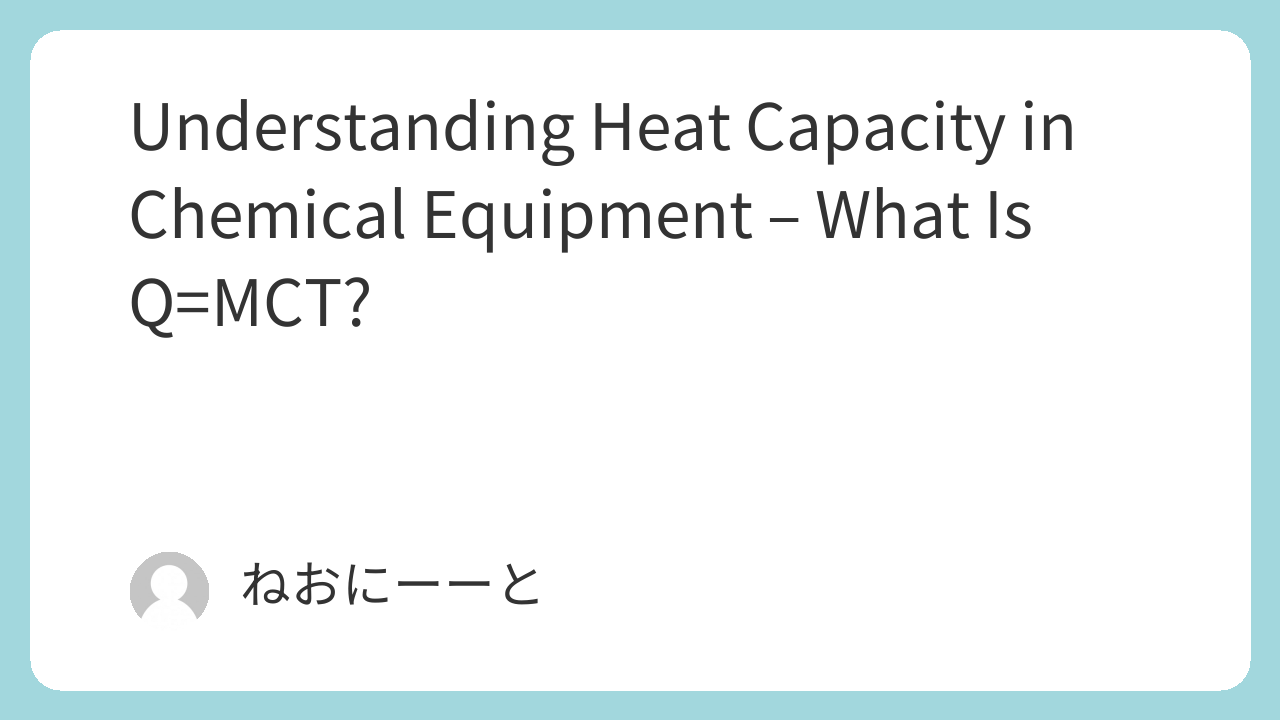Heat capacity is a basic but very important idea in chemical plants. It tells us how much heat is needed to raise the temperature of a system.
In real-world equipment like reactors, heat exchangers, or even pipes filled with fluid, engineers often think about Q=MCT – a helpful way to estimate total heat capacity for a mix of metal and contents.
In this article, we explain what heat capacity means, how to understand Q=MCT, and why it matters for engineers working with thermal systems.
1. What Is Heat Capacity?
Heat capacity is the amount of heat (energy) required to increase the temperature of a material by 1°C (or 1 K).
The formula is:
Q = C × ΔT
Where:
- Q = heat (Joules)
- C = heat capacity (J/°C)
- ΔT = temperature change
2. Heat Capacity vs. Specific Heat
- Heat Capacity (C): total capacity of an object (depends on size and material)
- Specific Heat (c): capacity per unit mass (J/kg·K)
To calculate C, you can multiply:
C = mass × specific heat
3. What Is Q=MCT?
MCT is a simple way engineers estimate heat capacity of equipment. It means:
MCT = Mass × Specific Heat × Temperature Change
For example, imagine a tank with:
- 1000 kg of water (c = 4.2 kJ/kg·K)
- 500 kg of stainless steel wall (c = 0.5 kJ/kg·K)
We estimate heat capacity like:
total = (1000 × 4.2) + (500 × 0.5) = 4200 + 250 = 4450 kJ/K
This helps when designing heating or cooling systems — we can see how much energy is needed to heat up the whole system.
4. When Do We Use This?
- Batch heating: knowing how fast the system heats up
- Energy estimation: calculating steam or electricity needed
- Control design: tuning temperature control loops
- Startup simulation: predicting how temperature will change over time
Summary
Heat capacity helps us understand how much heat is needed to warm up a system. In chemical plants, Q=MCT is a practical way to combine the effects of both metal and contents.
By using Q=MCT, engineers can estimate heating or cooling needs more accurately — making better decisions for design, operation, and energy use.

Comments